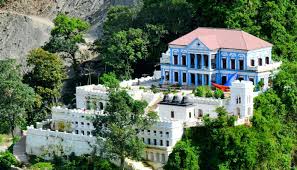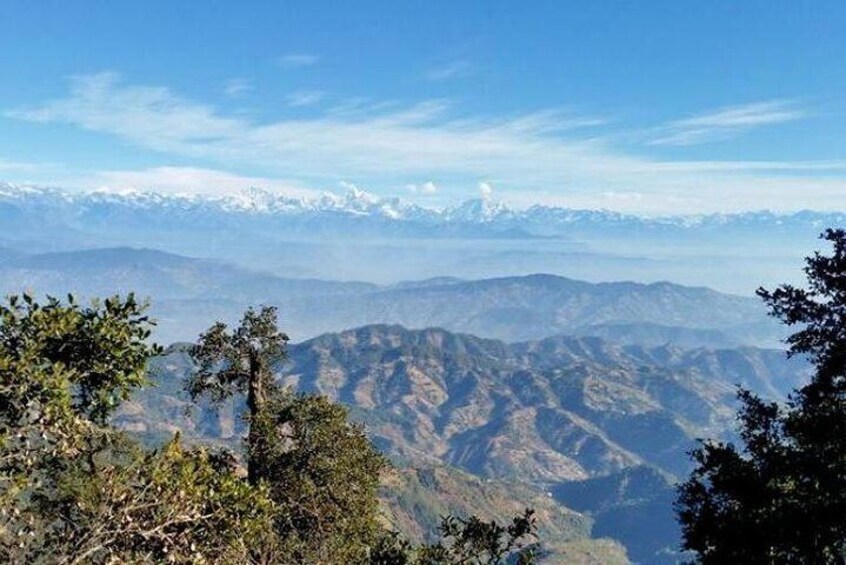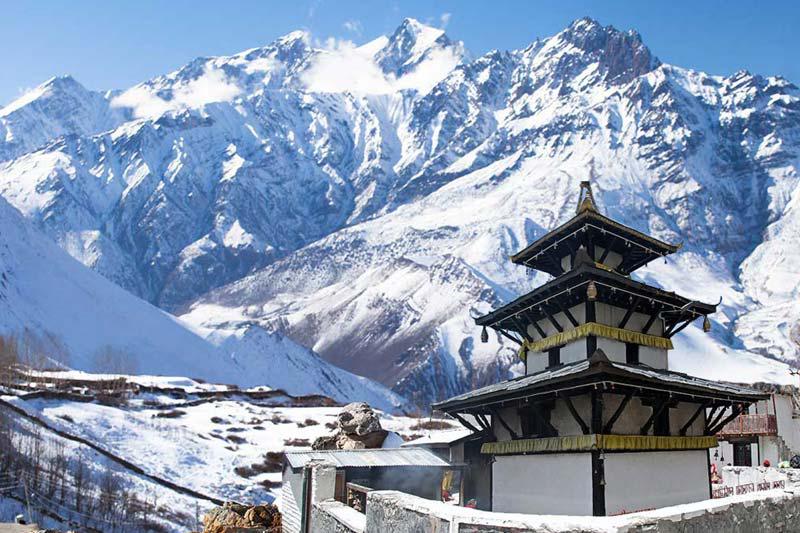RANI MAHAL
Introduction
Rani Mahal, often referred to as the “Taj Mahal of Nepal,” is a historic palace built on the banks of the Kali Gandaki River in Palpa, Nepal. This architectural masterpiece, with its stunning European-inspired design, stands as a testament to love and devotion. Constructed by General Khadga Shamsher Jang Bahadur Rana in 1893 in memory of his beloved wife, Tej Kumari Devi, the Rani Mahal symbolizes the enduring legacy of love, much like India’s iconic Taj Mahal. This article explores the history, architecture, symbolism, and current state of the Rani Mahal.
1. Historical Background
The history of the Rani Mahal is intertwined with the life of General Khadga Shamsher, a prominent figure of the Rana dynasty, which ruled Nepal from 1846 to 1951. Khadga Shamsher was the governor of Palpa and a politically influential figure of his time.
In 1892, his beloved wife, Tej Kumari Devi, passed away, leaving him heartbroken. To immortalize her memory, he decided to construct a grand palace by the riverbank. The palace was named “Rani Mahal” (Queen’s Palace) as a tribute to his late wife. General Khadga Shamsher faced political challenges within the Rana regime, which eventually led to his forced exile from Nepal. As a result, he had to abandon the Rani Mahal shortly after its completion.

2. Architecture and Design
The Rani Mahal’s architecture is a blend of European neoclassical styles with traditional Nepali influences. Its design reflects the grandeur of European palaces while incorporating elements that were practical for the local environment. The palace is sometimes compared to the Taj Mahal due to its symbolic story of love, but in terms of structure and material, it differs significantly.
Key Architectural Features
Location: Built on a rocky hill overlooking the Kali Gandaki River, the location offers a breathtaking view of the surrounding landscapes, making it a serene and peaceful site.
Materials Used: Unlike the white marble of the Taj Mahal, Rani Mahal was constructed using local stone, brick, lime, and wood. The construction materials were sourced locally, showcasing the architectural resourcefulness of the time.
Design Elements:
Main Building: The main building consists of large arched windows, columns, and symmetrical hallways.
Corridors and Verandas: Open corridors and wide verandas offer stunning views of the river and surrounding forests.
Garden and Courtyard: The palace also features a small garden and an open courtyard, enhancing its beauty and making it a place of tranquility.
Temple of Goddess Durga: A small temple dedicated to Goddess Durga is located within the palace premises, reflecting the influence of Hindu tradition.
Although the Rani Mahal is smaller in scale than the Taj Mahal, its picturesque location and neoclassical design elements give it a distinct charm, earning it the nickname “The Taj Mahal of Nepal.”
3. Symbolism and Significance
The Rani Mahal is symbolic of undying love, much like the Taj Mahal. General Khadga Shamsher dedicated this magnificent structure to his wife as a mark of his love and grief after her death. The palace represents devotion, loyalty, and the lengths to which a person can go to immortalize a loved one.
Apart from being a symbol of love, the Rani Mahal also reflects the cultural and historical evolution of Nepal. The influence of Western design during the Rana period is evident in its architecture, highlighting the interaction between Nepali rulers and European culture. Additionally, the construction of the Rani Mahal demonstrates the wealth, power, and ambition of the Rana rulers, who sought to leave behind enduring legacies through grand architectural projects.
4. Abandonment and Neglect
After General Khadga Shamsher’s exile from Nepal, the Rani Mahal was abandoned. Without proper maintenance, the palace began to deteriorate. The remote location of the Rani Mahal, coupled with the lack of accessibility, contributed to its neglect. Over the years, vegetation grew over its walls, and parts of the structure crumbled. It became a “forgotten palace,” hidden in the dense forests of Palpa.
For several decades, locals viewed the site as a ruin, and it did not attract much attention from tourists or the government. However, as interest in historical heritage sites grew, efforts were made to restore and revive the palace.
5. Restoration and Conservation
Recognizing its cultural and historical significance, the Nepalese government launched restoration efforts for the Rani Mahal. Conservation work included repairing broken structures, cleaning the facade, and enhancing access to the site. Local communities, as well as the Department of Archaeology, have played a role in ensuring the preservation of this monument.
One of the key initiatives in the restoration process was the construction of a motorable road leading to the palace. This improved accessibility, allowing tourists to visit the site more easily. While the structure is not as grand as it was during its peak, the restoration work has managed to preserve its essence.
6. Current Status and Tourism
The Rani Mahal has now become one of the top tourist destinations in the Palpa district. Travelers are drawn to its scenic beauty, tranquil ambiance, and its romantic history. Many tourists hike or drive to the site, with the journey itself offering stunning views of the hills, forests, and the Kali Gandaki River.
Tourism Highlights
Hiking and Trekking: The trail leading to the Rani Mahal is a popular trekking route for adventure enthusiasts.
Photography Spot: The palace’s location by the river and its vintage appearance make it a popular spot for photography.
Cultural Tours: Tourists interested in history and heritage visit the site to learn about the Rana dynasty and the love story behind the palace.
The rise in domestic and international tourism has provided an economic boost to the local communities. Homestays and small guesthouses have been established in the area, creating livelihood opportunities for locals.
7. Differences Between the Rani Mahal and the Taj Mahal
Although Rani Mahal is often called the “Taj Mahal of Nepal,” it differs in several aspects:
While the Taj Mahal is a monumental tomb, the Rani Mahal is a memorial palace. Nevertheless, both structures reflect the theme of eternal love, making the comparison symbolic rather than architectural.
8. Challenges and Preservation Issues
The Rani Mahal still faces challenges in terms of conservation. The remote location makes it difficult to provide regular maintenance. Natural wear and tear, weathering, and the risk of landslides along the riverbank pose significant threats. Periodic assessments by conservation experts are necessary to ensure its long-term survival.
The growing popularity of the site has also increased foot traffic, and without proper regulation, there is a risk of over-tourism damaging the site. Authorities are working to implement sustainable tourism practices to balance preservation with visitor engagement.
Conclusion
The Rani Mahal, known as the “Taj Mahal of Nepal,” is more than just a building; it is a story of love, loss, and legacy. Its serene location, architectural elegance, and historical value make it a cherished landmark in Nepal. Though not as grand as the Taj Mahal of India, its beauty lies in its simplicity, location, and emotional story. Restoration efforts have revived its splendor, transforming it into a popular tourist destination.
As interest in cultural tourism grows, the Rani Mahal continues to captivate the hearts of travelers. Its tale of love and devotion, paired with its natural beauty, ensures that it remains a symbol of timeless romance, much like its Indian counterpart.




